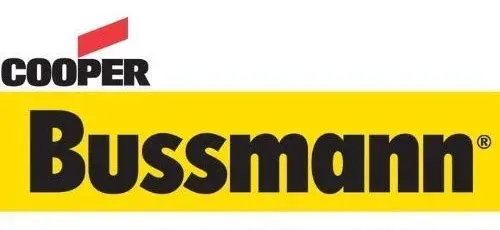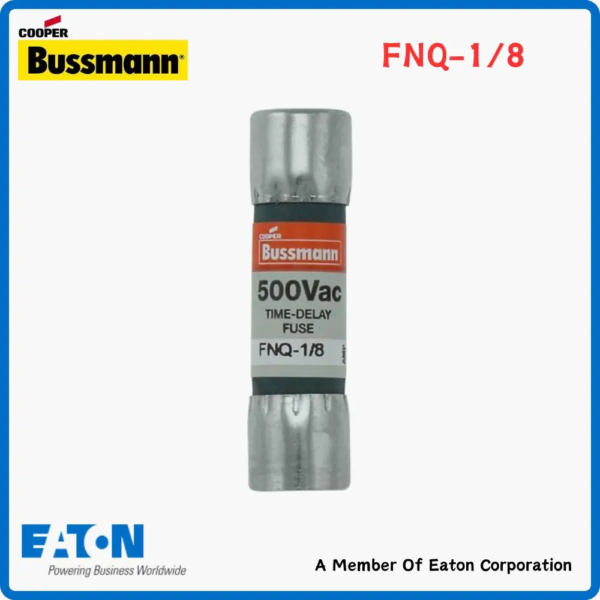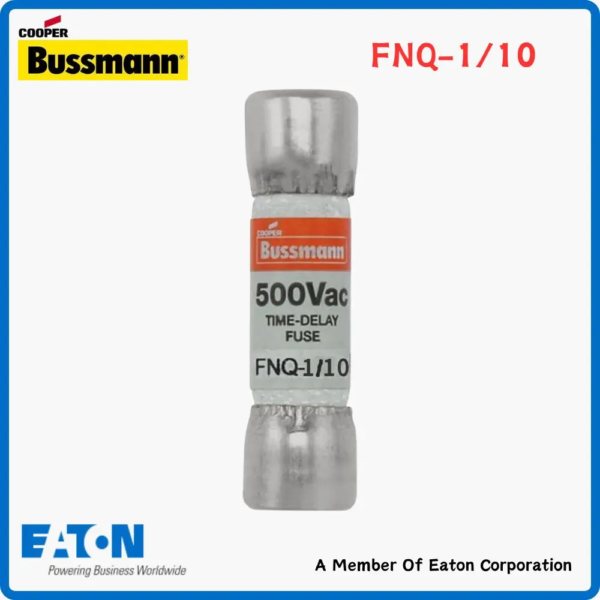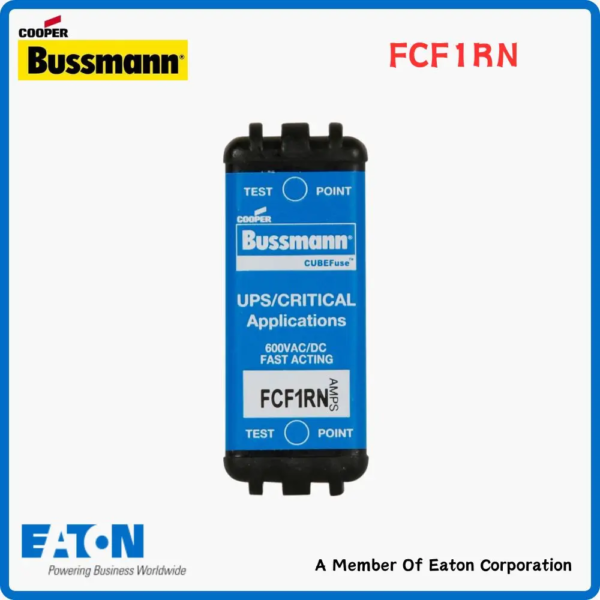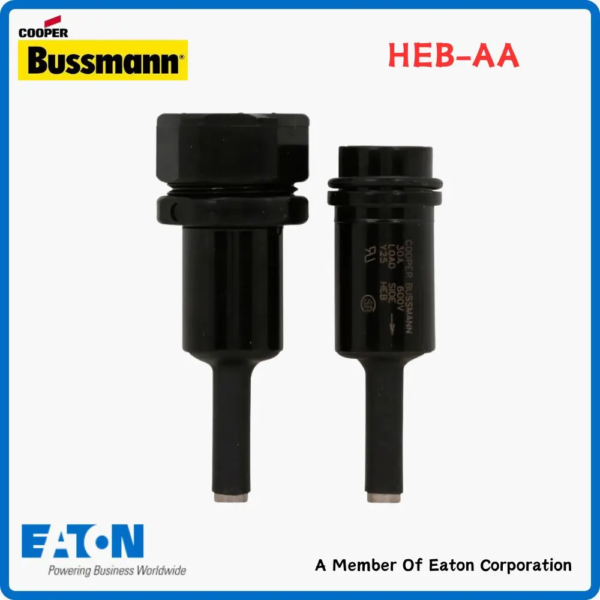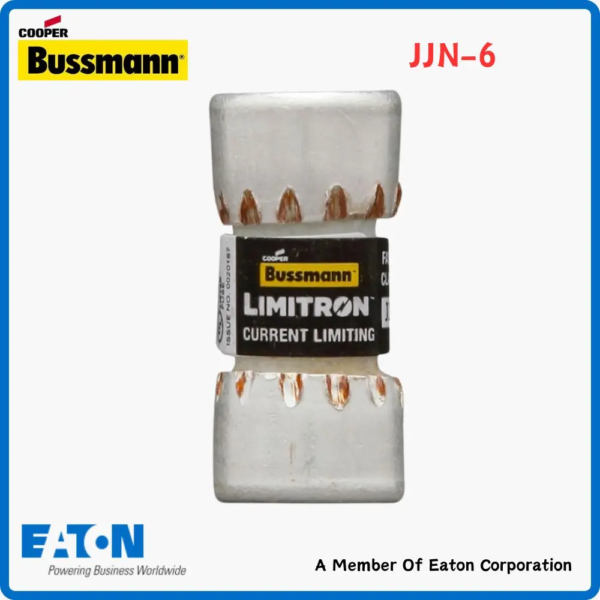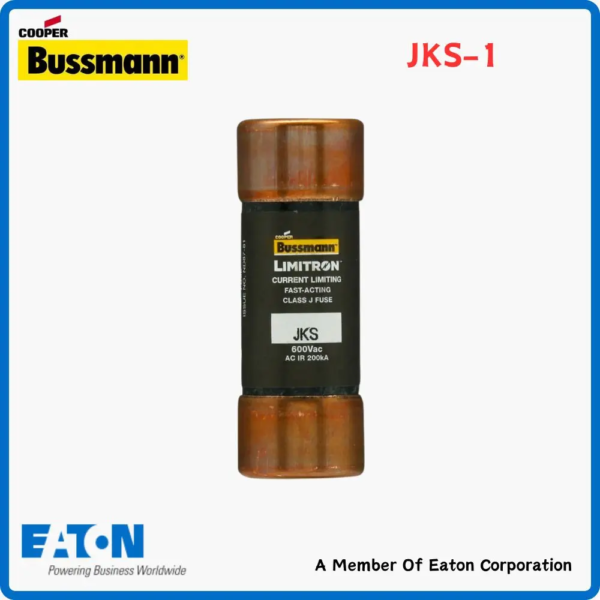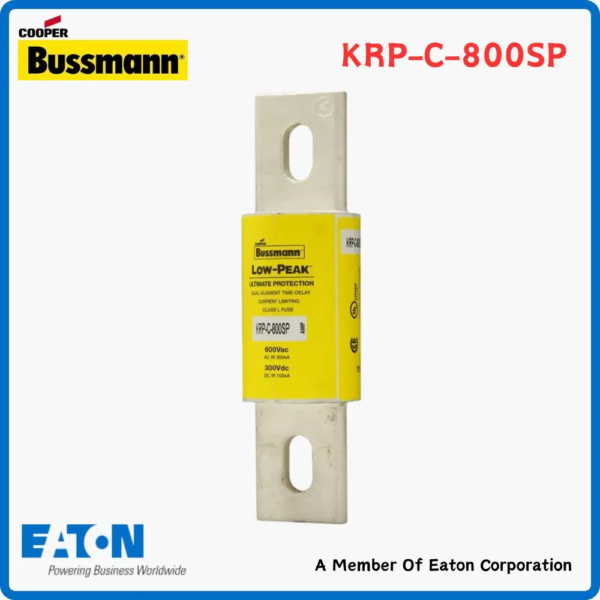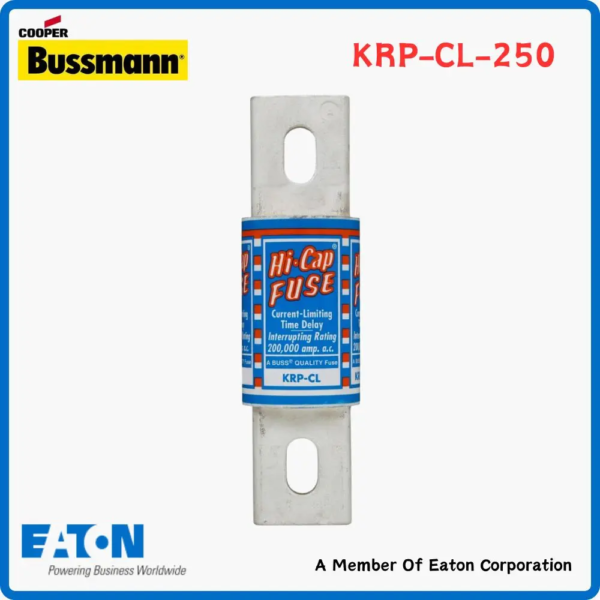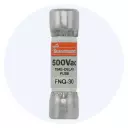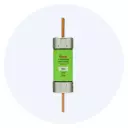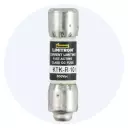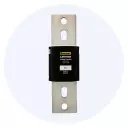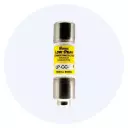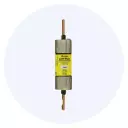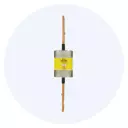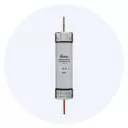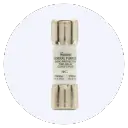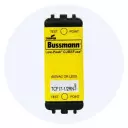Bussmann FNQ Fuses
“Eaton Bussmann Series UL Class CF, FCF 1RN Fuse” has been added to your cart. View cartEaton Bussmann FNQ-1/8 Low Voltage Fuse
Rated 5.00 out of 5In stock
$16.74EachSKU: FNQ-1/8Weight 0.175 lbs Dimensions 0.01138889 × 0.01138889 × 0.04166667 yd Brand Eaton Bussmann
Eaton-Bussmann, with its headquarters in St. Louis, Missouri, is a division of Eaton Corporation that specializes in the production of circuit protection products. These products are designed for use in the electrical, electronic, and automotive industries, both domestically and on a global scale. The company boasts a strong manufacturing network with facilities located in three domestic and six international locations, reflecting its commitment to serving customers worldwide. With a team of approximately 3,000 employees, Eaton-Bussmann is well-positioned to meet the ever-evolving needs of its customers in the electrical protection industry.
Eaton stands as a forward-thinking leader in power management, focused on enhancing lifestyles and safeguarding the planet. Leveraging the worldwide momentum of electrification and digital innovation, they propel the global shift towards renewable energy, addressing pressing power management issues on a global scale.Product type Low Voltage Fuse
Voltage 500 Volt
Eaton Bussmann FNQ-R-1/10 Low Voltage Fuse
Rated 5.00 out of 5In stock
$11.33EachSKU: FNQ-R-1/10Weight 0.175 lbs Dimensions 0.01138889 × 0.01138889 × 0.04166667 yd Brand Eaton Bussmann
Eaton-Bussmann, with its headquarters in St. Louis, Missouri, is a division of Eaton Corporation that specializes in the production of circuit protection products. These products are designed for use in the electrical, electronic, and automotive industries, both domestically and on a global scale. The company boasts a strong manufacturing network with facilities located in three domestic and six international locations, reflecting its commitment to serving customers worldwide. With a team of approximately 3,000 employees, Eaton-Bussmann is well-positioned to meet the ever-evolving needs of its customers in the electrical protection industry.
Eaton stands as a forward-thinking leader in power management, focused on enhancing lifestyles and safeguarding the planet. Leveraging the worldwide momentum of electrification and digital innovation, they propel the global shift towards renewable energy, addressing pressing power management issues on a global scale.Product type Low Voltage Fuse
Voltage 500 Volt
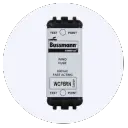 Bussmann WCF Fuses
Bussmann WCF Fuses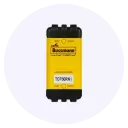 Bussmann FCF Fuses
Bussmann FCF Fuses
Eaton Bussmann Series UL Class CF, FCF 1RN Fuse
Rated 5.00 out of 5In stock
$79.99SKU: FCF1RNBrand Eaton Bussmann
Eaton-Bussmann, with its headquarters in St. Louis, Missouri, is a division of Eaton Corporation that specializes in the production of circuit protection products. These products are designed for use in the electrical, electronic, and automotive industries, both domestically and on a global scale. The company boasts a strong manufacturing network with facilities located in three domestic and six international locations, reflecting its commitment to serving customers worldwide. With a team of approximately 3,000 employees, Eaton-Bussmann is well-positioned to meet the ever-evolving needs of its customers in the electrical protection industry.
Eaton stands as a forward-thinking leader in power management, focused on enhancing lifestyles and safeguarding the planet. Leveraging the worldwide momentum of electrification and digital innovation, they propel the global shift towards renewable energy, addressing pressing power management issues on a global scale.Product type Fuse
Voltage 600 Volt
 Bussmann FRS Fuses
Bussmann FRS Fuses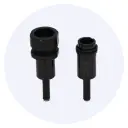 Bussmann HEB-AA Fuse
Bussmann HEB-AA Fuse
Eaton Bussmann HEB-AA Inline Fuse Holder
Rated 5.00 out of 5In stock
$18.99SKU: 504-HEB-AA-2Brand Eaton Bussmann
Eaton-Bussmann, with its headquarters in St. Louis, Missouri, is a division of Eaton Corporation that specializes in the production of circuit protection products. These products are designed for use in the electrical, electronic, and automotive industries, both domestically and on a global scale. The company boasts a strong manufacturing network with facilities located in three domestic and six international locations, reflecting its commitment to serving customers worldwide. With a team of approximately 3,000 employees, Eaton-Bussmann is well-positioned to meet the ever-evolving needs of its customers in the electrical protection industry.
Eaton stands as a forward-thinking leader in power management, focused on enhancing lifestyles and safeguarding the planet. Leveraging the worldwide momentum of electrification and digital innovation, they propel the global shift towards renewable energy, addressing pressing power management issues on a global scale.Product type Fuse
Voltage 600 Volt
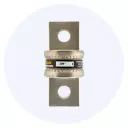 Bussmann JJN Fuses
Bussmann JJN Fuses
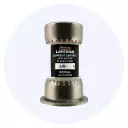 Bussmann JJS Fuses
Bussmann JJS Fuses
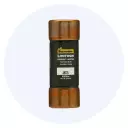 Bussmann JKS Fuses
Bussmann JKS Fuses
Eaton Bussmann Fuse JKS-1 Low Voltage Fuse
Rated 5.00 out of 5In stock
$13.99SKU: JKS-1Brand Eaton Bussmann
Eaton-Bussmann, with its headquarters in St. Louis, Missouri, is a division of Eaton Corporation that specializes in the production of circuit protection products. These products are designed for use in the electrical, electronic, and automotive industries, both domestically and on a global scale. The company boasts a strong manufacturing network with facilities located in three domestic and six international locations, reflecting its commitment to serving customers worldwide. With a team of approximately 3,000 employees, Eaton-Bussmann is well-positioned to meet the ever-evolving needs of its customers in the electrical protection industry.
Eaton stands as a forward-thinking leader in power management, focused on enhancing lifestyles and safeguarding the planet. Leveraging the worldwide momentum of electrification and digital innovation, they propel the global shift towards renewable energy, addressing pressing power management issues on a global scale.Product type Low Voltage Fuse
Voltage 600 Volt
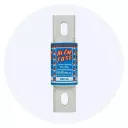 Bussmann KRP Fuses
Bussmann KRP Fuses
Eaton-Bussmann Fuses in Southwire Conduit Fill
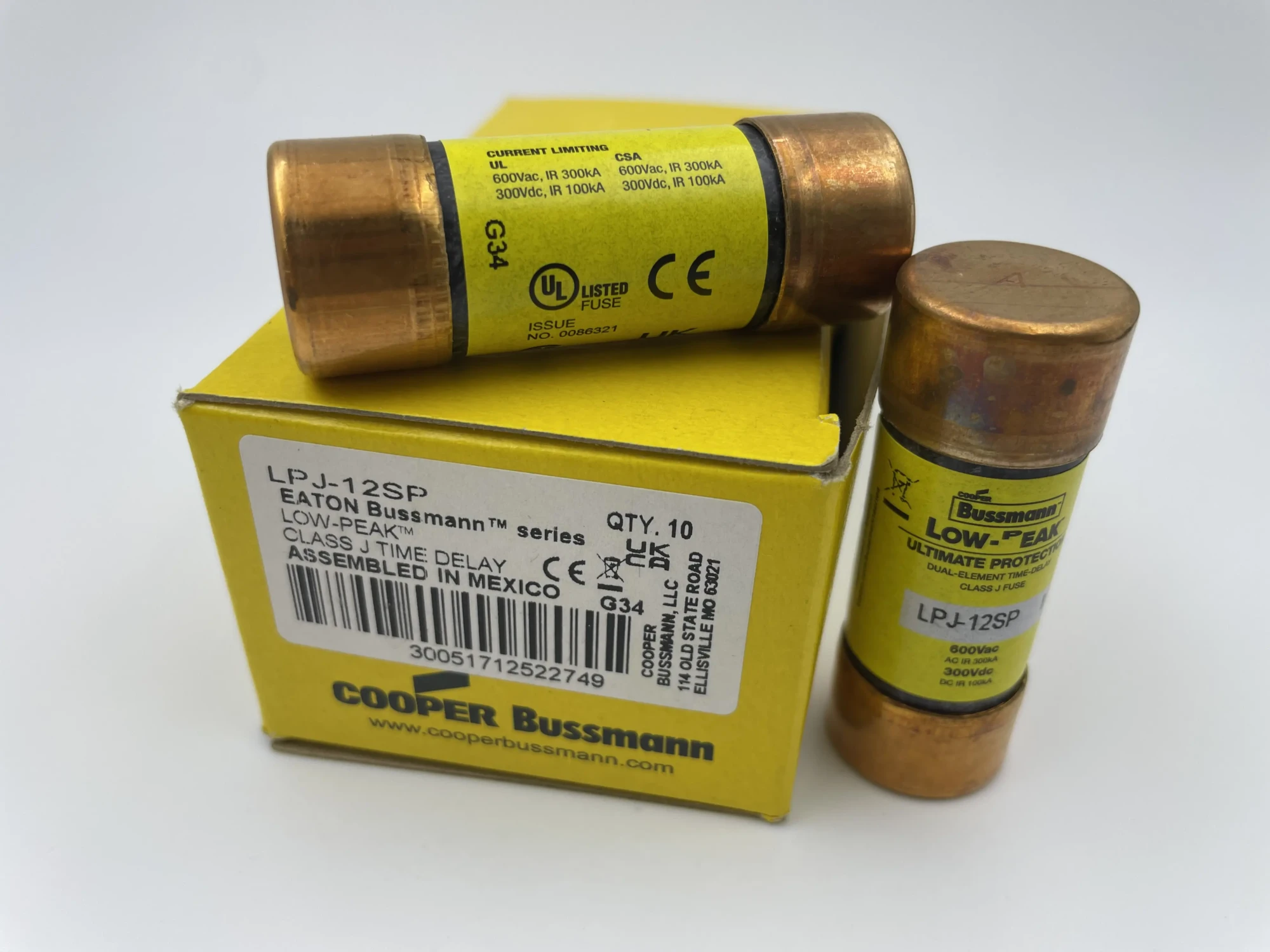
Eaton-Bussmann fuses are a crucial component in electrical systems, providing protection against overcurrent and overvoltage conditions. When it comes to installing these fuses in Southwire conduit fill, it’s essential to understand the product parameters, specifications, uses, and precautions to ensure safe and efficient operation.
Product Parameters and Specifications
Eaton-Bussmann fuses are designed to meet the highest standards of quality and reliability. The company offers a wide range of fuses, including North American fast-blow fuses, IEC standard fuses, American standard cylindrical fuses, and European standard square fast-blow fuses. These fuses are available in various ampere ratings, voltage ratings, and interrupting capacities to suit different application requirements.
When selecting Eaton-Bussmann fuses for use in Southwire conduit fill, it’s crucial to consider the following parameters:
- Ampere rating: The fuse must be rated for the maximum expected current in the circuit.
- Voltage rating: The fuse must be rated for the maximum voltage in the circuit.
- Interrupting capacity: The fuse must be able to safely interrupt the maximum fault current expected in the circuit.
- Operating temperature: The fuse must be able to operate safely within the expected temperature range of the application.
Uses of Eaton-Bussmann Fuses in Southwire Conduit Fill
Eaton-Bussmann fuses are widely used in various applications, including industrial, commercial, and residential electrical systems. In Southwire conduit fill, these fuses are used to protect against overcurrent and overvoltage conditions, which can cause damage to equipment and pose a risk to people and property.
Some common uses of Eaton-Bussmann fuses in Southwire conduit fill include:
- Protecting motors and motor control circuits
- Protecting transformers and transformer circuits
- Protecting electrical panels and distribution boards
- Protecting lighting and lighting control circuits
Precautions and Safety Considerations
When working with Eaton-Bussmann fuses in Southwire conduit fill, it’s essential to follow proper safety procedures to avoid injury or damage. Some precautions to consider include:
- Always follow the manufacturer’s instructions for installing and maintaining fuses.
- Ensure that the fuse is properly rated for the application and is installed in a suitable location.
- Avoid overloading the circuit, as this can cause the fuse to blow unnecessarily.
- Never attempt to repair or replace a fuse while the circuit is energized.
- Always use personal protective equipment, such as gloves and safety glasses, when working with electrical systems.
Southwire Conduit Fill Considerations
When installing Eaton-Bussmann fuses in Southwire conduit fill, it’s essential to consider the conduit fill requirements to ensure safe and efficient operation. Some factors to consider include:
- Conduit size and type: The conduit must be sized and typed to accommodate the fuse and any associated wiring.
- Wire sizing and type: The wire must be sized and typed to accommodate the expected current and voltage in the circuit.
- Conduit fill calculations: The conduit fill must be calculated to ensure that the fuse and associated wiring are properly installed and do not exceed the maximum allowed fill percentage.
In conclusion, Eaton-Bussmann fuses are a critical component in electrical systems, providing protection against overcurrent and overvoltage conditions. When installing these fuses in Southwire conduit fill, it’s essential to understand the product parameters, specifications, uses, and precautions to ensure safe and efficient operation. By following proper safety procedures and considering the conduit fill requirements, electrical professionals can ensure reliable and efficient operation of their electrical systems.
